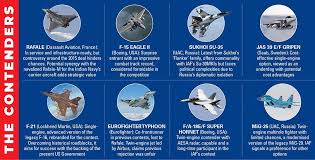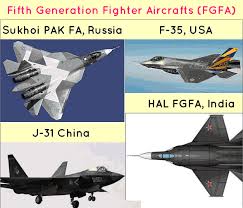
My Article published in the News Analytics Journal (Feb 25)
Aero India 2025 is set to be the epicentre of global aerospace and defence collaboration, highlighting India’s evolving role as a pivotal player in international defence partnerships. This 15th edition promises an impressive line-up of global stakeholders, showcasing cutting-edge technologies and fostering bilateral and multilateral agreements. With over 50 countries participating, the event will offer a glimpse into the future of strategic alliances shaping the aerospace and defence sectors.
Aero India 2025 is poised to serve as a testament to India’s growing stature as a global defence manufacturing hub and a reliable partner in the international aerospace and defence market. Expectations include announcements of major defence deals involving technology transfer, new joint ventures and partnerships between Indian and global companies, demonstrations of co-developed and indigenously manufactured platforms, and commitments from global firms to support India’s defence export ambitions.
Support to Indian Initiatives: Self-Reliance (Atmanirbhar Bharat) and Make in India.
Aero India 2025 is expected to be a critical platform for showcasing India’s advancements in the aerospace and defence sectors, aligning with the Indian government’s self-reliance initiatives (Atmanirbhar Bharat) and Make in India. These programs aim to enhance indigenous manufacturing capabilities while fostering international collaborations to strengthen India’s defence ecosystem. Foreign defence companies will likely play a pivotal role in accelerating India’s self-reliance in defence manufacturing.
-
- Technology Transfer. Many global defence companies, such as Boeing, Lockheed Martin, Dassault Aviation, and Saab, have shown interest in transferring cutting-edge technologies to India through Transfer of Technology (ToT) agreements. Technology transfer agreements could include joint development of advanced platforms like fighter jets, UAVs, and missile systems, and transfer of critical avionics and weapon systems for India’s indigenous defence platforms.
-
- Joint Ventures. Companies like Airbus, Rafael Advanced Defense Systems, and Thales are expected to partner with Indian firms such as Hindustan Aeronautics Limited (HAL) and Bharat Electronics Limited (BEL) and private-sector players like Tata Advanced Systems and Larsen & Toubro. Joint ventures may involve manufacturing aircraft components, avionics, and even entire platforms domestically. Collaborations like Tata-Airbus for the C-295 transport aircraft and Lockheed Martin-Tata for F-21 fighter production underline these partnerships.
-
- Setting Up Manufacturing Facilities. Several foreign firms have already set up or announced plans to establish production units in India under Foreign Direct Investment (FDI) guidelines. Boeing and Tata’s joint venture for producing fuselages for Apache helicopters. Lockheed Martin and Tata’s collaboration for the C-130 transport aircraft components. These facilities are expected to expand under Make in India, with potential investments announced at Aero India 2025.
-
- Collaborative R&D. Foreign companies may collaborate with Indian start-ups and DRDO to co-develop technologies tailored to Indian needs, such as AI-powered drones, cyber-security systems, and space-based defence solutions. This would strengthen India’s indigenous capabilities while meeting global standards.
-
- Skill Development and Employment Generation. International firms can help train Indian engineers and technicians, creating a skilled workforce for high-tech defence manufacturing. These efforts align with the Make in India initiative by promoting employment and building technical expertise locally by training Indian engineers and technicians.
-
- Local Sourcing and Indigenisation. Foreign defence contractors are increasingly sourcing components from Indian MSMEs (Micro, Small, and Medium Enterprises). This not only reduces costs but also integrates Indian companies into the global defence supply chain.
-
- Offset Obligations. Foreign companies winning large contracts from India are obligated to reinvest a percentage of the contract value into the Indian economy, typically through local production or technology partnerships. Aero India 2025 will likely witness announcements of new offset agreements contributing to the Atmanirbhar Bharat mission.
-
- Support for Export Goals. India aims to become a major exporter of defence equipment. Collaborations with foreign firms can help India achieve this by building export-oriented manufacturing hubs and co-developing products for third-party markets.
Expected Global Partnerships & Collaborations
India-US Defence Technology and Trade Initiative (DTTI). The DTTI serves as a cornerstone for India-US defence cooperation. It focuses on Co-Developing critical technologies such as unmanned aerial systems (UAS), advanced jet engine technologies, AI-driven defence platforms, and joint production of components for fighter jets and rotary-wing aircraft. At Aero India 2025, announcements around technology transfers and co-production agreements are expected, including developments in the Predator drone program and the possible localisation of parts for advanced F-21 fighter jets. These partnerships are between the Indian Ministry of Defence (MoD), the U.S. Department of Defence, and Major corporations, including Lockheed Martin, Boeing, and General Atomics, underscore India’s growing influence in the Indo-Pacific security architecture and the emphasis on interoperability between the armed forces of both nations.
Indo-French Aerospace Cooperation. India and France share a long-standing defence partnership, highlighted by the success of the Rafale deal. The focus areas include enhancements to the Rafale fighter aircraft, co-development of next-generation aircraft engines and stealth technologies, and expanding collaboration in space exploration and satellite technologies. Aero India 2025 is expected to unveil agreements between Dassault Aviation, Safran Group, Hindustan Aeronautics Limited (HAL), and ISRO on Rafale upgrades and possibly the joint development of engines for India’s AMCA project. Collaborative efforts in space technologies, especially in reusable launch systems and space situational awareness, will also take center stage.
India-Russia Military Aviation Partnership. Despite shifting geopolitical dynamics, India and Russia maintain strong defence ties. At Aero India 2025, Russia is expected to pitch for the Su-57 and Ka-226T helicopters. Additionally, discussions around BrahMos II hypersonic missile developments will likely underscore this partnership’s (United Aircraft Corporation (UAC), Rostec Corporation, and HAL) technological depth.
UK-India Partnership. The UK-India collaboration in aerospace technology is a time-tested partnership. Convergence may occur between BAE Systems, Rolls-Royce, and India’s Defence Research and Development Organisation (DRDO) towards the co-development of the Tempest 6th-generation fighter jet, integrating advanced radar systems and electronic warfare (EW) technologies, and establishing training and simulation programs for combat readiness. Announcements at Aero India 2025 are expected to include new agreements on technology sharing and localised component production, aligning with India’s Atmanirbhar Bharat vision.
Indo-Israel Defence Collaboration. India-Israel defence cooperation is synonymous with innovation in unmanned systems and precision weaponry. Mutual interests include the development of high-altitude long-endurance (HALE) drones and loitering munitions, the co-production of advanced anti-drone systems and counter-UAV technologies, and enhancing missile defence systems, including Barak-8 upgrades. Aero India 2025 will highlight developments in drone warfare technologies, including AI-driven solutions for countering UAV threats. Collaborative efforts between Israel Aerospace Industries (IAI), Rafael Advanced Defence Systems, and Bharat Electronics Limited (BEL) on missile defence systems are also expected to garner attention.
India-Japan Space and Defence Initiatives. India and Japan’s growing space and defence technologies partnership reflects their shared strategic interests in the Indo-Pacific. Convergence areas include the co-development of satellite-based navigation and communication systems, joint research on space debris management and space situational awareness, and collaboration on robotic lunar exploration missions. Aero India 2025 may feature announcements between the Japan Aerospace Exploration Agency (JAXA), ISRO, and defence ministries of both nations on joint space missions and defence applications of satellite technologies.
European Defence Partnerships. European nations would leverage Aero India 2025 to expand their defence footprint in India. Possible areas could be Eurofighter Typhoon fighter aircraft, co-development of next-generation air-to-air missiles and autonomous combat systems, and establishment of advanced pilot training programs. Expected highlights could include technology transfer agreements and joint ventures between Airbus, MBDA, and HAL to develop autonomous combat systems and advanced missile technologies.
Indo-South Korea Aerospace Ventures. South Korea’s expertise in aerospace and defence aligns with India’s Make-in-India initiative. Mutual areas of interest could include expanding maintenance, repair, and overhaul (MRO) capabilities, developing advanced trainer aircraft and light combat vehicles, and collaborating on naval aviation solutions and anti-submarine warfare technologies. Aero India 2025 could see agreements between Korea Aerospace Industries (KAI) and Tata Advanced Systems Limited (TASL) for co-development projects, including next-generation trainer aircraft and solutions for naval aviation.
Middle Eastern Collaborations. Middle Eastern nations are emerging as key partners in India’s aerospace ecosystem. A collaborative focus could be on co-producing aero-structures and components for UAVs and fighter jets, establishing MRO facilities for military and civilian aircraft, and developing joint UAV systems for surveillance and combat. Aero India 2025 will likely feature agreements between UAE’s EDGE Group, DRDO, and Indian private aerospace firms on joint production and establishing advanced MRO facilities, enhancing regional cooperation.
Emerging Collaborations with African Nations. India’s growing Defence exports to Africa will be a focal point at Aero India 2025. Joint Areas of Focus could be development of cost-effective defence solutions tailored to African security needs, capacity-building initiatives, including training programs for military personnel, and export of Indian defence platforms to African markets. Collaborative efforts between Indian defence exporters and African defence ministries could materialise in training and technology sharing will highlight India’s role as a reliable partner in strengthening Africa’s defence capabilities.
Conclusion. Aero India 2025 is a landmark event that showcases the convergence of global defence technologies and strategic partnerships. It is likely to strengthen the synergy between foreign defence firms and India’s self-reliance goals. The combination of advanced foreign technology and India’s growing defence manufacturing capabilities will not only contribute to the Make in India initiative but also position India as a global defence manufacturing hub. From advanced aerospace systems to AI-driven innovations, the international collaborations will shape the future of defence and security. As India positions itself as a global hub for defence production and technology, the event will be crucial in fostering alliances that strengthen regional and global security.
Please do Comment.
For regular updates, please register your email here:-
References and credits
To all the online sites and channels.
References:-
- Department for Promotion of Industry and Internal Trade (DPIIT), “Make in India: Strategic Sectors – Defence”, https://makeinindia.com/defence-manufacturing
- Sharma, R., & Mishra, P., “Evaluating Technology Transfers in the Indian Defence Sector: Successes and Challenges.” Journal of Defence Studies, 18(3), pp. 45-62. (2024).
- Singh, K, “The Role of Foreign Direct Investment in India’s Aerospace Industry.” International Journal of Industrial Development, 15(2), pp. 89-104, (2023).
- Mehta, A, “Atmanirbhar Bharat and Defense Modernization: A Strategic Analysis.” Defence Research and Development Journal, 10(1), pp. 21-38. (2022).
- The Economic Times, “Global Giants Backing India’s Defense Industry at Aero India 2025.” https://economictimes.indiatimes.com
- The Hindu Business Line, “Aero India 2025: Pushing India’s Aerospace Industry into Global Spotlight.” https://thehindubusinessline.com
- India Today, “Aero India’s Role in Realising India’s Defense Export Goals.” February 2024.
- FICCI (Federation of Indian Chambers of Commerce & Industry), “Catalysing Atmanirbhar Bharat: Defence and Aerospace Sector Vision 2030”.
- Aero India 2025 Guide, Published by the Indian Ministry of Defence.
Disclaimer:
Information and data included in the blog are for educational & non-commercial purposes only and have been carefully adapted, excerpted, or edited from reliable and accurate sources. All copyrighted material belongs to respective owners and is provided only for wider dissemination.


